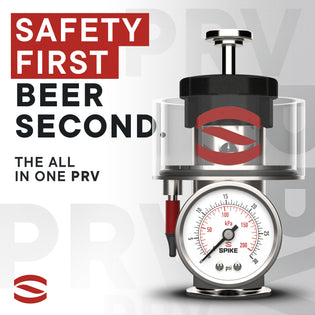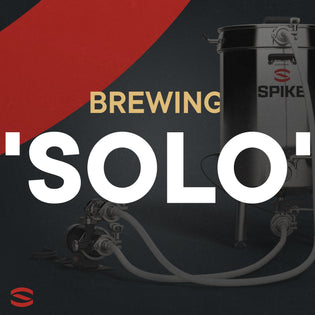By Josh Lindquist
Lately non-alcoholic beer is all the rave, so we decided to jump on that train and take a closer look at brews without the buzz.

What Is Non-Alcoholic Beer?
Non-alcoholic beer is, as the name suggests, beer that contains little to no alcohol. Sounds simple, right? But there's more to this tasty concoction than meets the eye.
ABV Differences
What Is ABV?
ABV stands for Alcohol By Volume, and it's the standard measurement of how much alcohol is present in a beverage. It's typically expressed as a percentage, and it's what separates your average beer from its non-alcoholic cousin.
ABV of Regular Beer
Your regular beer usually has an ABV between 4-6%, but it can vary depending on the style. For example, a hearty stout might clock in at 8% ABV, while a light pilsner might only have 3.5%.
ABV of Non-Alcoholic Beer
Non-alcoholic beer typically has an ABV of less than 0.5%, which is a significant reduction compared to its boozy counterparts. How do they do it? The magic lies in the brewing process, which we'll explore in just a moment.

Types of Non-Alcoholic Beer
Alcohol-Free Beer
Alcohol-free beer is the strictest category of non-alcoholic beer, containing absolutely no alcohol. These brews are perfect for those who want to enjoy the taste of beer without any of the effects of alcohol.
Low-Alcohol Beer
Low-alcohol beer contains only a small amount of alcohol, usually between 0.5-1.2% ABV. These beers are great for folks who want a little buzz without going overboard.
How Is Non-Alcoholic Beer Made?
The process of making non-alcoholic beer is surprisingly similar to regular beer production, with one key difference: the removal or prevention of alcohol formation. This can be done through a variety of methods, including vacuum distillation, reverse osmosis, and arrested fermentation. Each method has its pros and cons, but the end goal is the same: a delicious beer with little to no alcohol content.
Vacuum Distillation
Vacuum distillation is a process that involves heating the beer under a vacuum to lower the boiling point of alcohol. This allows the alcohol to evaporate at a lower temperature, which helps preserve the beer's flavor and aroma. Once the alcohol is removed, the beer is cooled and carbonated, resulting in a non-alcoholic brew that retains much of its original taste.
Pros:
- Effective in removing alcohol content
- Retains the beer's flavor and aroma
Cons:
- Can be energy-intensive
- Requires specialized equipment
Reverse Osmosis
Reverse osmosis is a filtration method that involves forcing the beer through a semipermeable membrane to separate the alcohol and water from the rest of the beer's components. The alcohol and water mixture are then evaporated, leaving behind a concentrated beer flavor. This concentrated beer is then mixed with water to achieve the desired alcohol content or lack thereof.
Pros:
- Precise control over the final alcohol content
- Preserves the beer's flavor and aroma
Cons:
- Can be time-consuming
- Requires specialized equipment and filters
Arrested Fermentation
Arrested fermentation is a method that involves stopping the fermentation process before the yeast has a chance to convert all the sugar into alcohol. This is typically done by cooling the beer quickly, which slows down the yeast's activity and effectively halts the production of alcohol. The result is a beer with a lower alcohol content and a slightly sweeter taste.
Pros:
- Simple and easy to implement
- Doesn't require specialized equipment
Cons:
- Limited control over the final alcohol content
- May result in a sweeter beer, which might not be desirable for some styles
Each of these methods offers a unique approach to creating non-alcoholic beer, with their own set of advantages and drawbacks. Brewers often choose a method based on the desired flavor profile, available resources, and their own personal preferences. The end result, regardless of the method, is a tasty non-alcoholic brew that can be enjoyed by anyone, from the designated driver to the beer aficionado looking for a lighter option.

Is Non-Alcoholic Beer Different to Make Compared to Regular Beer?
In many ways, yes! Brewing non-alcoholic beer can be a bit more complex than regular beer, requiring additional steps and specialized equipment to remove or prevent alcohol formation. But the extra effort is worth it when you're sipping on a refreshing, guilt-free beverage.
What Are the Benefits of Drinking Non-Alcoholic Beer?
Non-alcoholic beer offers several benefits, such as being a lower-calorie option, promoting better hydration, and allowing you to enjoy social events without the negative effects of alcohol. Plus, it's a great way to expand your palate and discover new flavors.
Choosing the Best Style of Non-Alcoholic Beer for You
Just like regular beer, non-alcoholic beer comes in a variety of styles, from hoppy IPAs to rich stouts. When choosing a non-alcoholic beer, consider your personal taste preferences and what you enjoy in a traditional beer. Don't be afraid to try different styles – you might be surprised at how much you enjoy a new flavor!
Wrap it Up
Non-alcoholic beer is a fantastic alternative for those who want to enjoy the taste and social aspects of beer without the alcohol content. With a rich history, a variety of styles, and numerous benefits, it's no wonder that non-alcoholic beer is gaining popularity among beer lovers. So, next time you're craving a brew, why not give non-alcoholic beer a try? You just might find your new favorite beverage.
FAQ
Is Non-Alcoholic Beer Healthy?
While "healthy" can be subjective, non-alcoholic beer does offer some benefits, such as fewer calories and better hydration compared to regular beer. As with any beverage, moderation is key—it's always wise to maintain a balanced diet and lifestyle.
Can I Drink Non-Alcoholic Beer While Pregnant?
Although non-alcoholic beer has a very low alcohol content, it's best to consult your doctor before consuming any amount of alcohol during pregnancy. They can provide personalized advice based on your individual circumstances and needs.
Can I Drive After Drinking Non-Alcoholic Beer?
Non-alcoholic beer contains little to no alcohol, so it shouldn't impair your driving abilities. However, laws regarding alcohol consumption and driving may vary by location. Always check local regulations and use common sense to ensure your safety and that of others on the road.
Does Non-Alcoholic Beer Give You a Buzz?
Nope! Non-alcoholic beer typically contains less than 0.5% ABV, which is not enough to give you a buzz or cause intoxication. You can enjoy the taste of beer without the alcohol-related effects.
Can You Drink Non-Alcoholic Beer If You Are Under 18 Years Old?
Laws regarding the consumption of non-alcoholic beer by minors may vary depending on your location. It's best to check your local regulations before enjoying a non-alcoholic beer if you're under the legal drinking age.
Want to learn more about non-alcoholic beer or give it a try? Check out Go Brewing by visiting them in the taproom or ordering online!

Josh Lindquist is the Continuous Improvement Manager at Spike Brewing. When he’s not immersed in his work (which he absolutely loves by the way) he can be found rock climbing, playing sand volleyball or researching the hottest trends on the newest tech gadgets.





